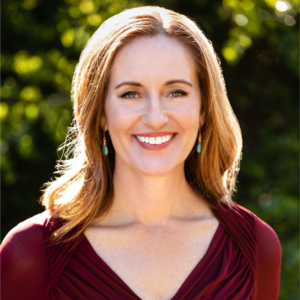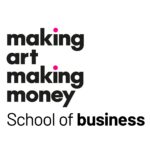Are You Creative Enough To Call Yourself An Artist?
Are You Creative Enough To Call Yourself An Artist?
(Transcription)
Artist, Austin Hill Shaw
Ann Rea: Alright, I am here live with Austin Hill Shaw, creativity master, and, so I was in a class, a “business class” with Austin two years ago now that was offered by the National Speakers Association and I don’t know if you recall this moment, Austin, but our teacher, our fearless teacher, said at one point during the class, now, mind you, he is a public speaker and he has authored many books. Yet, during the presentation, one of the things he said was “I am not creative.” And I don’t know if you were there, or if you remember when I shot back
Austin Hill Shaw: Oh, I do. I certainly remember that. I had to go get therapy, your response was so forceful.
QUESTION: Do you remember what I said?
Austin Hill Shaw: You said, it was something along– I feel like you said “That’s a bunch of horse shit, everybody is creative.”
Ann Rea: Well–
Austin Hill Shaw: Does that sound about right?
Ann Rea: I’m glad you heard it that way. Actually what I said was “That makes no damn sense. That makes as much sense as you saying ‘I’m not logical.'”
Austin Hill Shaw: Yeah, ‘I’m not human.’
Ann Rea: Of course you’re creative, you wrote three books! No, it was more than that, like, how many books has this dude written
Austin Hill Shaw: Yeah,
Ann Rea: And how many speeches has he given, keynote speeches, and he’s not creative.
Austin Hill Shaw: Yeah,
Ann Rea: So, here is what I want to talk to you about, because you know all about creativity. I don’t know where this B.S. got infected into our consciousness that we’re not creative, but it did. And now it’s starting to turn around, right? Now that we understand that the right-brainers will rule the world and that creativity is capital, really.
Austin Hill Shaw: Yeah,
Ann Rea: And all of the left-brain thinking jobs are have been shifted offshore. We’re starting to come around to an understanding of the value of creativity. But there’s still some weird, devaluing disconnect and I’ve just been wondering, given your experience as a, I’m gonna call you an “expert” in creativity, what are three myths that you’ve noticed that are associated with creativity. So, what I just mentioned was this idea that you can’t be both, you have to be one or the other.
QUESTION: What other myth or self-limiting myths have you noticed around creativity?
Austin Hill Shaw: Yeah, the three myths that I’ve noticed around creativity is, first of all, the first myth is that creativity is not a gift of everybody. It’s basically a gift of only certain individuals and not others.
Ann Rea: Yep.
Austin Hill Shaw: And that’s the first myth, and it sort of goes along like it’s a talent, or it’s some sort of an aptitude. But I think, in terms of human beings, It is THE operating system,
Ann Rea: Right.
Austin Hill Shaw: It is the thing that we need for to really have fulfilling lives. But, beyond that, to survive, especially in this age of automation.
Ann Rea: Right
Austin Hill Shaw: And so, that’s the first myth, that creativity is a gift of only certain people and not others.
Ann Rea: And that would be, or, make as much sense as saying logic is only the gift of certain people and not others like no one else can add or subtract, or no one else could read directions, right? It’s just, it’s bizarre.
Austin Hill Shaw: It is bizarre, but it’s ingrained. I get it, ya know, I don’t fault people for thinking that and then we have people that, so called creative pursuits and non-creative pursuits, but really, a deeper cut is that, you know, human beings have evolved in a way to create. Anthropologists would call us bipeds who make things. We are makers, this is how we move through the world. And those people who do not enact their innate creativity often actually start to look like machines, they act like machines, they’re a little bit intolerable to be around, sometimes. Even though they have the same creative potential, they’re locked into habitual patterns, but everybody has the potential.
QUESTION: So what’s another myth? What’s a second myth that you have observed around notions of creativity?
Austin Hill Shaw: So, the second myth around creativity I think has to do with, and this might seem contrary to the first one, but the second myth is that creativity is contained within the individual.
Ann Rea: Oh, yeah, I like that.
Austin Hill Shaw: Okay, and the reason that that’s another myth, and I’m going to try and get into the subtleties just a little bit here, is that, you know, often we associate creativity with maybe genius, again, this talent that’s welling up within one individual and not another. But, in my understanding of creativity is that it’s actually a dialog with the world.
Ann Rea: The collective consciousness, is that what you mean?
Austin Hill Shaw: What’s that?
Ann Rea: Do you mean a dialog with the collective consciousness?
Austin Hill Shaw: It’s everything, really, it’s a dialog with the cosmos, it’s a dialog with nature, it’s a dialog with other human beings, it’s a dialog within cities and urban centers. It has to do with the way a person is willing to interact with the environment around them, and basically interacting from a place of “I don’t know everything,” and that there’s actually very little that I know, and the world is always here, teaching me new things.
Ann Rea: Okay.
Austin Hill Shaw: It’s always giving me new things to ponder,
Ann Rea: New data
Austin Hill Shaw: So there’s a sort of a curiosity there, yeah.
Ann Rea: New input to process, right?
Austin Hill Shaw: New input to process, exactly. And so then–
Ann Rea: And to respond to–
Austin Hill Shaw: Yeah, right. So, if you think of the expert, for example, which of course I am now, you know,
Ann Rea: Yeah, cause I just said you were.
Austin Hill Shaw: Right. You know the problem with being the expert is that you assume you know everything, right?
Ann Rea: Right.
Austin Hill Shaw: That’s the conventional idea but in fact, the true expert is learning all the time, they are
Ann Rea: Correct.
Austin Hill Shaw: They are curious all the time, they are filled with wonder, all the time.
Ann Rea: Right.
Austin Hill Shaw: And so it’s not, again, an isolated contained thing. It’s a constant dialog with the world around you, and that’s why the second myth has to do with creativity is NOT contained within the individual.
QUESTION: Okay, and what’s the third myth that’s associated with creativity?
Austin Hill Shaw: So, the third myth is, has to do with the fact that most people associate only certain human activities with creativity and not others. For example, they’ll associate art or the performing arts with creativity, but not necessarily science, or technology, or even healing or the health system. But, again, I see that creativity is a way of being that all of us have the potential to enact, that you can apply to anything. For example, what does it look like to be a creative parent versus a non-creative parent? What does it look like to be a creative business person, versus a non-creative business person? If you take the innate ability to create and start to apply it to different things, you can see that creativity is like turning the light onto whatever you’re working on. You know, the suddenly new ways of seeing things, there’s more curiosity, there’s more, again, interaction and co-creation and it brings magic to anything. You can be a creative car mechanic.
Ann Rea: Right.
Austin Hill Shaw: You know, breathes into the art of motorcycle maintenance. You know, it’s all about how these people who you think are just sort of like bumbling around with engines are, in fact, either communing with the engine creatively, or following a sense of, like, well, if I do this then this will happen, like, kind-of causality.
Ann Rea: Right, right, I love that. What is it Einstein said that creativity or, imagination is more important that intelligence.
Austin Hill Shaw: Yeah, I agree. I completely agree, and I think you can have a say. You can have maybe a low intelligence, but function on a way higher level than a person with a higher intelligence simply by bringing more creativity into your life.
Ann Rea: And more value, we could also bring more value.
Austin Hill Shaw: Exactly, more value, because intelligence, and again, there’s lots of measures of it, but it’s often measured on how much you can process information–Conceptual information. And in fact, the conceptual band of the experience of being human is only a small band. There’s physical sensation, there’s emotional intelligence, and there’s even trans-rational or spiritual understanding, all of which play themselves out in even the most simple of creative processes.
Ann Rea: See, you are the expert.
Austin Hill Shaw: Yeah.
Ann Rea: So if you could tell the world on thing that they really need to understand about creativity, or being creative, or their creative potential, what would you tell them?
QUESTION: What would you like them to really know that they may or may not know?
Austin Hill Shaw: I would just say this, I mean it goes back to what we talked about earlier, and it’s really, you know the whole goal of my work is to dispel that first myth, and basically what I would tell them is this: Creativity is a defining trait of being human, and a basic need for true fulfillment. And really it comes down to that. We NEED to be creative in order to feel fulfilled.
Ann Rea: Right.
Austin Hill Shaw: There is no other path than to than to bring creativity into our lives.
Ann rea: And in order to survive, right?
Austin Hill Shaw: In order, exactly, to survive, not only just to survive, it’s on all levels from survival up to full-on thriving in the world, creativity has to be a part, or playing out at all levels.
Ann Rea: Right, I think it’s just our vocabulary and these cultural categories, or socio-economic categories, get it the way of understanding that creativity is in flow, in force all the time in all different realms of human existence, whether it is the zen in our, or, what is it, zen in art of–? I wrote, I read that book.
Austin Hill Shaw: Yeah.
Ann Rea: Yeah, so that is an excellent example, My friend Dr. E’s famous quote is “Every entrepreneur is an artist, and every artist is an entrepreneur.” So, the most successful entrepreneurs are incredibly creative individuals, innately creative individuals, whether it’s Steve Jobs or Sir Richard Branson So, yeah, but for whatever reason, we do tend to, we like to put things into neat categories, and stick labels, and that doesn’t always work out very well, so… I appreciate your mission very much,
Austin Hill Shaw: Yeah, I also appreciate you bringing up the idea of entrepreneurship because it is, I think entrepreneurship and creativity can be synonymous in terms of how they work because–
Ann rea: I think they are.
Austin Hill Shaw: Yeah, the entrepreneurial mindset is, has a similar awareness to what a creator is doing.
Ann Rea: Well, yeah, I mean a business is just made-up. Okay, let’s just look at it for what it is: A business is made-up, right?
Austin Hill Shaw: Yes
Ann Rea: Something didn’t exist, and then someone thought of an idea of a way to provide value to somebody, and then they found those people, and then they had a business. They delivered the value, and in exchange for that they received payment. And then hopefully generated a profit. It’s really just, that’s the basic recipe.
Austin Hill Shaw: Right.
Ann Rea: All made up, just like a painting is all made up, a sculpture is all made up, a business is made up. Right?
Austin Hill Shaw: I totally agree.
Ann Rea: Yeah. So here’s to making stuff up, Austin.
Austin Hill Shaw: I agree! It feels good to make stuff up!
Ann Rea: I know, I love making stuff up! All right, well, I’m gonna, I’m gonna make up the idea of you and I going to get another cup of tea at Samovar and having a fun lunch again, and I wanna thank you for your time, and your devotion to this whole topic, and the whole reality, and for shining light on it. I really appreciate that, and I appreciate you, and you’re always fun to talk to.
Austin Hill Shaw: I wanna thank you for dispelling the myth of the starving artist. I’m overriding that because, again, you shouldn’t have to sacrifice in order to create. Creation itself is an expression of abundance that’s pouring forth from the deepest part of who you are.
Ann Rea: Amen! That’s awesome.
Austin Hill Shaw: And the willingness of you to help people do what they need to do to get over the hang-ups around money is extraordinary, I love you so much for doing that.
Ann Rea: Thank you, thanks for helping. Gimme a fist-bump, here.
Austin Hill Shaw: Yo, yo! Bam.
Ann Rea: Alright, thank you so much, Austin.

About Ann Rea
Ann Rea is a San Francisco-based artist and the creator of The Making Art Making Money program. Her art and business savvy have been featured on ABC, HGTV, Creative Live, The Good Life Project, in the book Career Renegade by Jonathan Fields, by the San Francisco Chronicle, Art Business News, Fortune, and Inc. Magazines. Rea’s artistic talent is commended by her mentor, art icon, Wayne Thiebaud.

